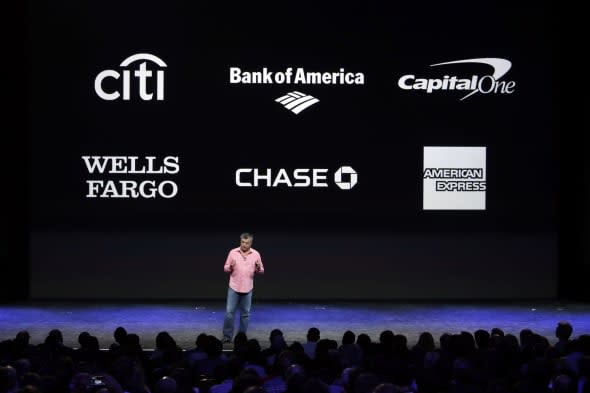Apple will reportedly receive .15% from all Apple Pay transactions

The Financial Times is reporting that Apple will receive a small percentage from each transaction consumers complete with Apple Pay, the company's recently announced mobile payment platform. So more than just a means to drive iPhone sales, Apple Pay will also serve to pad Apple's bottom line.
But such is the sway of the tech company that JPMorgan, Visa and the other banks and payments networks sent senior executives to Mr Cook's presentation on Tuesday to pay homage. Bank chief executives fawned about the "exceptional customer experience" and the "exciting move".
They are also paying hard cash for the privilege of being involved: 15 cents of a $100 purchase will go to the iPhone maker, according to two people familiar with the terms of the agreement, which are not public. That is an unprecedented deal, giving Apple a share of the payments' economics that rivals such as Google do not get for their services.
That's certainly an interesting tidbit, but don't expect Apple Pay to be a huge money maker early on. For starters, the feature will only work on new iPhone 6 models. Second, the 220,000 merchant locations that will support Apple Pay at launch belies just how big the credit-based economy in the U.S. is. To wit, the Wall Street Journal last week, citing the Electronic Transactions Association, relayed that there are "more than nine million U.S. merchants" who currently accept credit and debit cards. In other words, 220,000 merchant locations is a good start, but there remains a long list of merchants Apple will have to convince to get on board sometime down the road.
The good news for Apple is that all merchants are being forced to upgrade their POS terminals by October 2015 with EMV support.
EVM cards are read at the point of sale by inserting the end of the card featuring the chip into a payment terminal, rather than swiping the familiar magnetic stripe on the back of the card. Consumers then enter a PIN to authorize the transaction. (If you've traveled internationally, you're likely familiar with this system).
These EMV cards and the resulting transactions are far more difficult to counterfeit than what Americans consider "standard" credit cards. While EMV is the norm around the world, only about 14 percent of US merchants support this technology today and very few consumers own credit cards incorporating these chips.
So when merchants inevitably start upgrading their terminals to comply with what is effectively a government mandate, it stands to reason that a good number will opt for terminals that support NFC payments.

